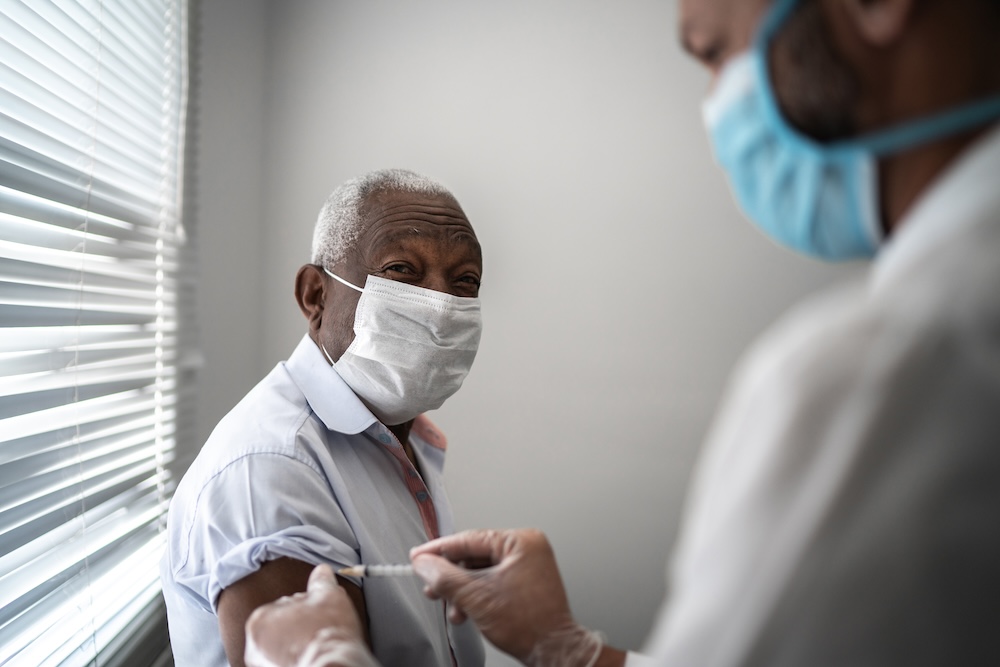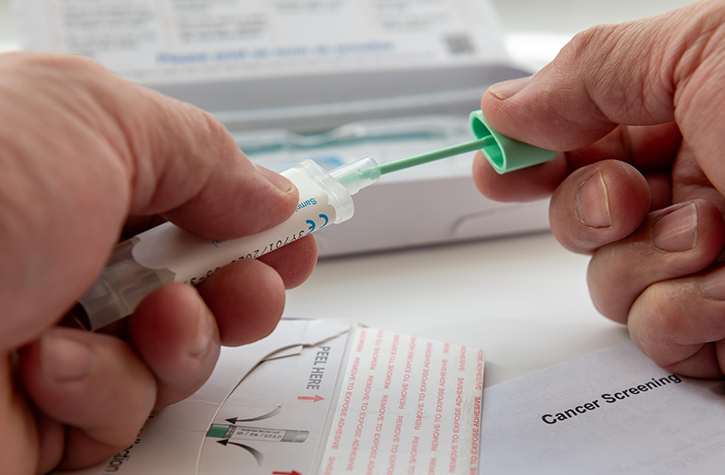December 5, 2019
Women with greater adiposity, or body fatness, were significantly less likely to receive all of the recommended chemotherapy dose to treat their breast cancer, and they were subsequently 30% more likely to die from the disease as a result, according to Kaiser Permanente research published today in JAMA Oncology.
The study, “Body composition, adherence to anthracycline and taxane-based chemotherapy, and survival after nonmetastatic breast cancer,” builds on previous Kaiser Permanente research, which found that the balance of muscle and fat in the body influences survival in breast cancer patients.
Body composition and chemotherapy
The current study included 1,395 patients in Kaiser Permanente’s Northern California region who were treated with anthracycline and taxane-based chemotherapy for nonmetastatic breast cancer between Jan. 1, 2005, and Dec. 31, 2013.
Researchers used computed tomography (CT) scans, taken to stage breast cancer patients for treatment, to measure the proportion of muscle and fat tissue in the patient’s bodies.
Treatment records were used to estimate the ratio of the dose received to the dose that was planned, known as the relative dose intensity, for each patient.
Breast cancer patients with higher amounts of intra-abdominal adipose tissue were 19% more likely to receive a lower relative dose intensity on chemotherapy (less than 85% of the planned dose). Patients receiving lower relative dose intensities were 30% more likely to die from their breast cancer.
“Our studies are showing that a erson’s body composition may influence the extent and the way that chemotherapy drugs are distributed, increasing the risk of toxic effects and possibly leading to dose delays or reductions,” said senior author Bette J. Caan, DrPH, research scientist in the Division of Research.
Preventing reduced dosing
The researchers noted that CT scans are routine in many cancer patients, and automated methods make the accurate assessment of body composition from these scans rapid and low cost. When CT is not available, even simple measures of body composition, such as waist circumference, could help clinicians to identify cancer patients who are likely to experience toxic effects and therefore may be at risk for receiving reduced doses of life-saving chemotherapy treatments.
These patients may need supportive interventions like those being tested in the ongoing FORCE trial that Dr. Caan leads and for which Dr. Feliciano is a co-investigator. FORCE is testing a resistance-training intervention in cancer patients to optimize body composition during treatment and mitigate toxic side effects.
“We know that exercise has multiple benefits during chemotherapy. One of them might be to help patients fully complete their planned course of chemotherapy,” Feliciano said. “To the best of our knowledge, resistance training has a lot of potential for benefit and little potential for harm in cancer patients.”
This story originally appeared on the Division of Research







